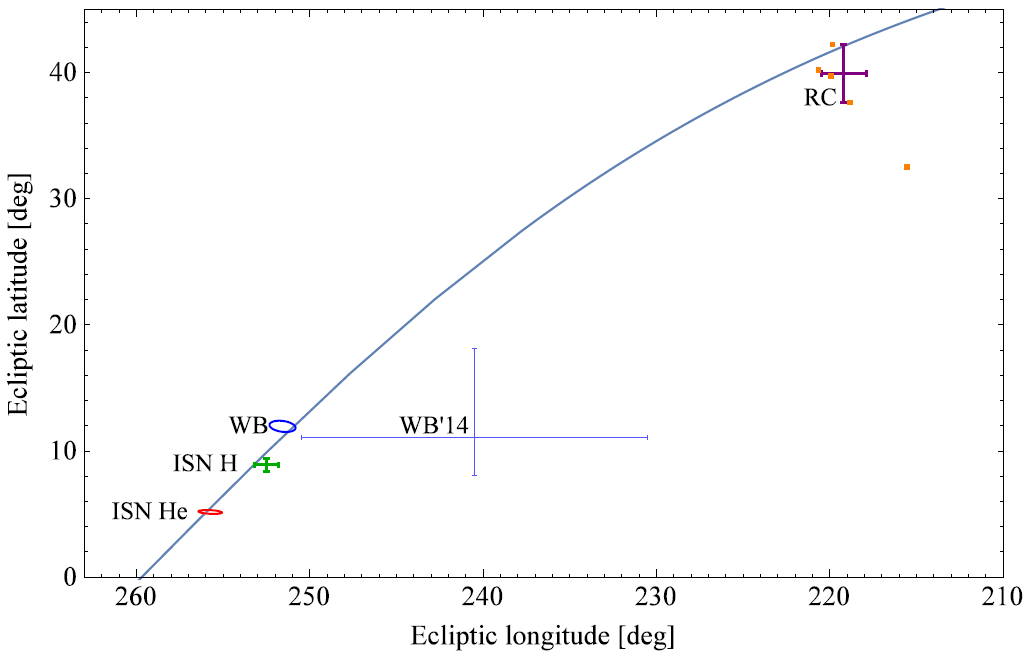

by Kubiak et al.
Abstract: Following the high-precision determination of the velocity vector and temperature of the pristine interstellar neutral (ISN) He via a coordinated analysis summarized by McComas et al., we analyzed the Interstellar Boundary Explorer (IBEX) observations of neutral He left out from this analysis. These observations were collected during the ISN observation seasons 2010–2014 and cover the region in the Earth’s orbit where the Warm Breeze (WB) persists. We used the same simulation model and a parameter fitting method very similar to that used for the analysis of ISN He. We approximated the parent population of the WB in front of the heliosphere with a homogeneous Maxwell–Boltzmann distribution function and found a temperature of ∼9500 K, an inflow speed of 11.3 km s−1, and an inflow longitude and latitude in the J2000 ecliptic coordinates 251.6°, 12.0°. The abundance of the WB relative to ISN He is 5.7% and the Mach number is 1.97. The newly determined inflow direction of the WB, the inflow directions of ISN H and ISN He, and the direction to the center of the IBEX Ribbon are almost perfectly co-planar, and this plane coincides within relatively narrow statistical uncertainties with the plane fitted only to the inflow directions of ISN He, ISN H, and the WB. This co-planarity lends support to the hypothesis that the WB is the secondary population of ISN He and that the center of the Ribbon coincides with the direction of the local interstellar magnetic field (ISMF). The common plane for the direction of the inflow of ISN gas, ISN H, the WB, and the local ISMF is given by the normal direction: ecliptic longitude 349.7° ± 0.6° and latitude 35.7° ± 0.6° in the J2000 coordinates, with a correlation coefficient of 0.85.

